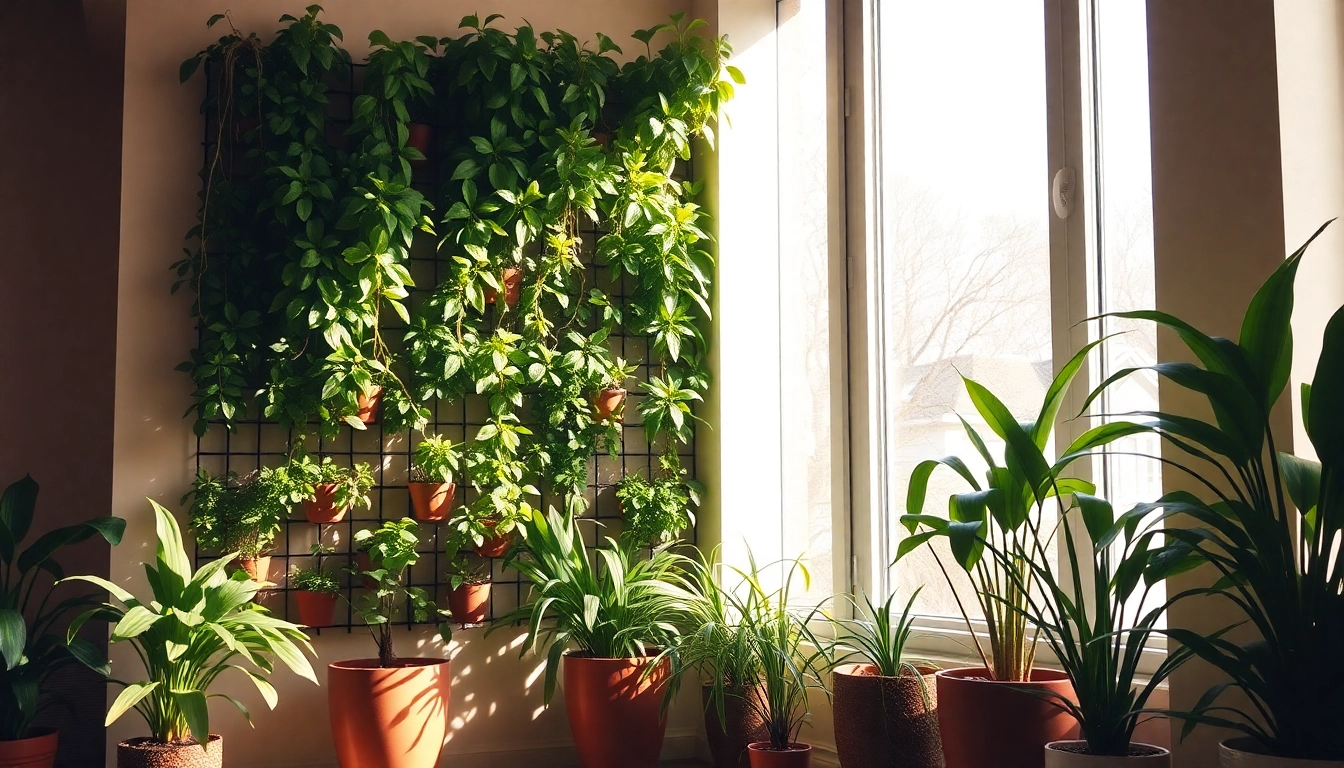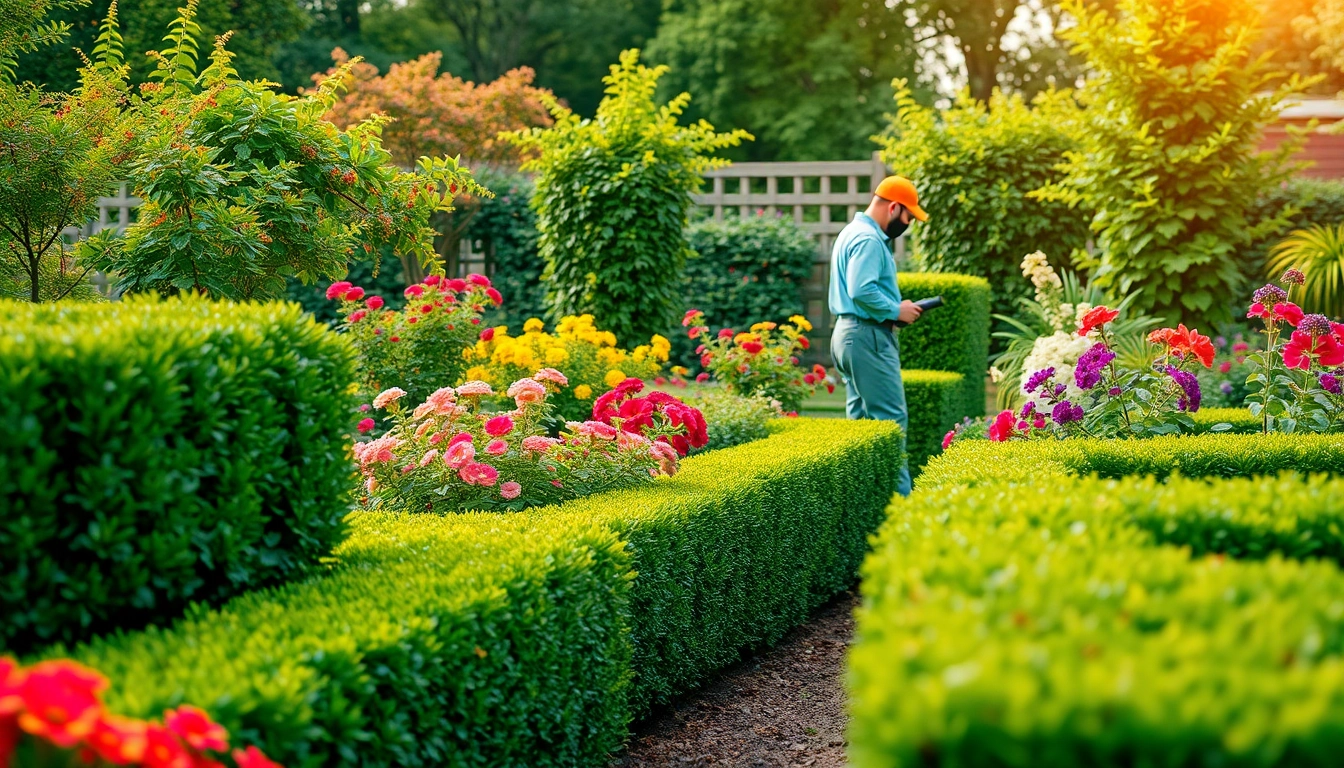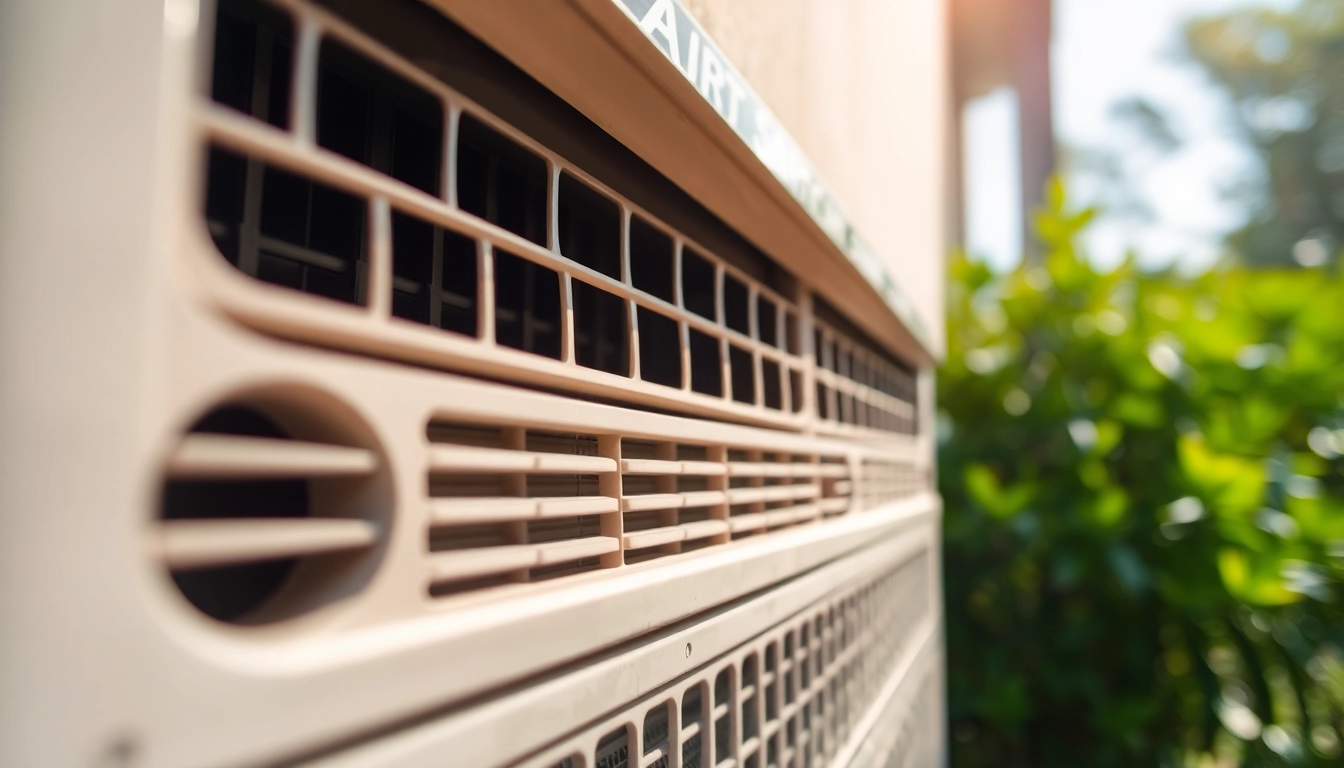Understanding Wandbegrünung Indoor
What is Wandbegrünung Indoor?
Wandbegrünung Indoor, or indoor green walls, have emerged as an innovative solution for adding touches of nature within our living and working spaces. This vertical garden system utilizes various plants to create a lush, aesthetically pleasing environment against walls. Green walls can be integrated into homes, offices, and commercial spaces, providing not just beauty, but also functional benefits that enhance air quality and even improve mood. Essentially, Wandbegrünung Indoor serves as a unique intersection of art and sustainability, merging design and ecology to transform the way we experience interiors.
Benefits of Indoor Green Walls
The adoption of indoor green walls presents several benefits that extend beyond mere visual appeal. Firstly, these installations contribute to improved air quality by absorbing carbon dioxide and releasing oxygen while filtering out airborne pollutants. Emerging studies suggest that plants can remove toxins, reduce humidity, and enhance overall indoor air quality, making spaces healthier for occupants.
Another significant advantage of indoor green walls is their ability to regulate temperature and humidity levels. By serving as natural humidifiers, plants can help combat dry air, thus moderating temperature fluctuations throughout the seasons. This can be especially beneficial in urban environments where traditional climate control systems may consume substantial energy.
From a psychological standpoint, interacting with greenery has been shown to alleviate stress, reduce anxiety, and enhance overall well-being. The presence of plants in indoor spaces fosters a sense of tranquility, making them ideal for workplaces where stress management is essential. Moreover, aesthetically, green walls serve as a striking focal point in any room, offering dynamic decor that can change with the seasons, while enhancing design themes with living textures and colors.
Design Inspirations and Ideas
Incorporating a green wall into your space requires thoughtful planning and creativity. The possibilities for design are vast, ranging from minimalistic designs featuring a few carefully selected plants to lush, jungle-like walls that are teeming with flora.
One popular design inspiration is the use of cascading plants, such as pothos or philodendrons, which create a waterfall effect. This approach adds visual interest and can soften hard edges in a room. You might consider integrating small shelves or planters for decorative items or LED lights, enhancing the overall aesthetic.
For those seeking a modern touch, geometric patterns created with a variety of plants can articulate contemporary design principles while still maintaining an organic feel. This setup allows for the combination of different colors and textures, which can be tailored to match existing decor. Additionally, varying plant heights can create depth and movement within the space, keeping the design engaging.
Choosing the Right Plants for Wandbegrünung Indoor
Best Plants for Indoor Vertical Gardens
When it comes to selecting plants for your indoor vertical garden, several factors must be taken into account, including the available light, humidity levels, and your own gardening skills. Not all plants thrive in the same conditions, so choosing the right ones is crucial for a successful installation.
Some of the best plants for indoor vertical gardens include ferns, peace lilies, and snake plants. For instance, ferns are excellent at thriving in humid environments and can help maintain moisture levels, while peace lilies are known for their ability to filter toxins from the air. Snake plants, on the other hand, are particularly hardy and can survive in a variety of lighting conditions, making them perfect for beginners.
Low-Light vs. Bright Light Plant Choices
The light conditions within your indoor space will significantly influence the types of plants you can choose. Low-light plants, such as ZZ plants, pothos, and spider plants, are ideal for areas that don’t receive a lot of natural sunlight. These plants are resilient and can adapt to shaded environments while still thriving beautifully.
In contrast, bright light spaces can accommodate a broader range of plants, including succulents, herb varieties like basil and mint, and flowering plants such as orchids. When choosing plants, remember to consider the long-term growth potential, as some plants may require more space as they mature.
Easy-Care Plants for Beginners
If you’re new to gardening or indoor plant care, selecting easy-care plants is essential. Succulents are wonderful for beginners due to their low maintenance needs and tolerance for forgetfulness when it comes to watering. Additionally, plants like the pothos and the spider plant are forgiving and can bounce back from occasional neglect.
When managing an indoor green wall, putting emphasis on easy-care plants helps ensure that your vertical garden maintains its lush appearance without overwhelming you with excessive care demands. Consider mixing easy-care options with a few more challenging plants if you feel adventurous, but start slow to build your confidence in plant care.
Installation Process for Wandbegrünung Indoor
Preparing Your Space for a Vertical Garden
Preparation is key to a successful installation of your indoor green wall. Start by selecting the ideal wall that receives adequate natural light and has easy access to water and electricity, if necessary. Assess the structural integrity of the wall, ensuring it can support the weight of the plants and the system itself.
Next, measure the dimensions of the area you wish to cover and sketch out your design. This planning phase should include considerations for plant height, spacing, and overall visual balance. Keep in mind that your design can evolve, so be flexible in your approach and give yourself room to adjust.
Essential Tools and Materials
The installation of an indoor vertical garden will require specific tools and materials. Basic tools include a level, a drill, and screws for securing the planting system. Additionally, you’ll need a growing medium, such as soil or hydroponic growing mats, depending on the type of vertical garden you choose to create.
Consider using a pre-made vertical garden kit, which typically includes all necessary components, including irrigation systems, plant pockets, and support frames. These kits can simplify the process, especially for those new to gardening.
Step-by-Step Installation Guide
1. Choose a location: Identify a suitable wall that gets the required amount of light.
2. Prepare the wall: Ensure that the wall is clean and free from any barriers that might inhibit growth.
3. Install the framework: Using a level, mark where your support frame will go and secure it to the wall. Make sure it is firmly attached to prevent any accidents.
4. Insert the growing medium: Fill your plant pockets or containers with the chosen soil or hydroponic medium.
5. Plant your greenery: Carefully insert your selected plants, taking into account their light and water needs.
6. Set up irrigation (if applicable): If using an irrigation system, ensure it is connected and functioning properly. Test it to ensure all plants are adequately watered.
7. Finishing touches: After installation, consider adding decorative elements like lighting or decorative accessories to enhance the visual appeal of your green wall.
Maintaining Your Wandbegrünung Indoor Garden
Watering and Fertilization Tips
A well-maintained indoor green wall requires careful attention to watering and nutrient needs. Most indoor plants require watering when the top inch of soil feels dry, but this can vary by plant type. It is essential to establish a routine for monitoring moisture levels to prevent overwatering, which can lead to root rot.
Fertilization is equally important, particularly if you have a hydroponic setup. Use a balanced, water-soluble fertilizer to provide essential nutrients during the growing season, typically spring and summer. Follow package instructions to avoid over-fertilization, which can harm plants.
Pest Control and Disease Prevention
Monitoring for pests and diseases is crucial in maintaining a healthy indoor green wall. Regularly inspect plants for signs of pests such as aphids, spider mites, or whiteflies. Using organic pest control methods, like neem oil or insecticidal soap, can help combat these issues without risking damage to your plants or the environment.
Diseases often arise from improper care, such as overwatering or poor air circulation. Providing proper spacing between plants and ensuring adequate airflow can significantly reduce the risk of diseases associated with humidity and mold.
Seasonal Care and Adaptation
As seasons change, so do the care requirements for your indoor green wall. During winter months, plants may need less water and reduced nutrients due to slower growth rates. Adjust your care routine accordingly, reducing watering frequency but maintaining vigilance for pests.
Ensure that plants are not placed too close to heating vents, which can dry them out or expose them to temperature fluctuations. Likewise, during summer, be attentive to increased water needs due to heat and higher evaporation rates.
Maximizing the Aesthetic Value of Wandbegrünung Indoor
Creative Layouts and Arrangements
The visual impact of your indoor green wall can be enhanced through thoughtful layouts and arrangements. Consider creating tiered layers with plants of varying heights to create depth and visual interest. Utilizing asymmetrical designs can create an organic feel, while symmetrical arrangements may cater to those who prefer structured aesthetics.
Incorporating horizontal planters at certain intervals can also add variation, creating mini-shelves for smaller plants or decorative elements that integrate seamlessly into the overall design.
Combining Art and Nature in Your Space
Blending art into your indoor green wall can transform a functional installation into a stunning visual masterpiece. Consider incorporating artwork or sculptures within the greenery, or use lighting to highlight specific plants or sections. This interaction broadens the narrative of your vertical garden, making it not only a garden but an integral part of the overall interior design.
Personalizing Your Indoor Vertical Garden
Your indoor vertical garden should reflect your personality and lifestyle. Consider personal touches, such as incorporating photographs, small decorative items, or themed planters that align with your decor. This customization not only enhances the garden’s visual impact but also creates a sense of connection to the space.
Through careful selection, arrangement, and maintenance, your indoor green wall can flourish, acting as a vibrant focal point that enhances both the aesthetic and functional elements of your living or working environment. It serves as a reminder of nature’s beauty and benefits, all within the comfort of your space.



